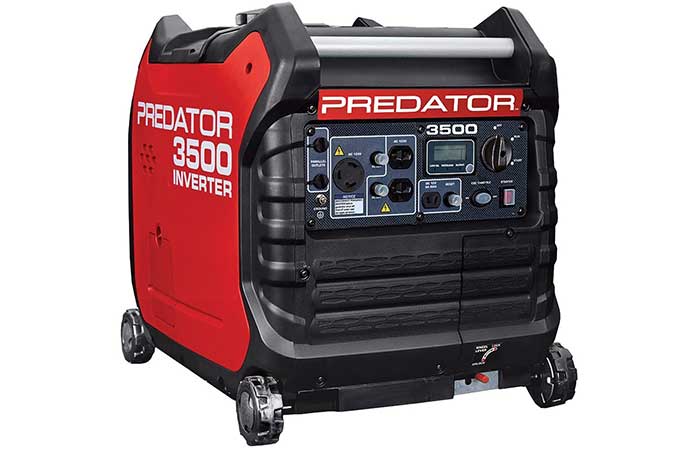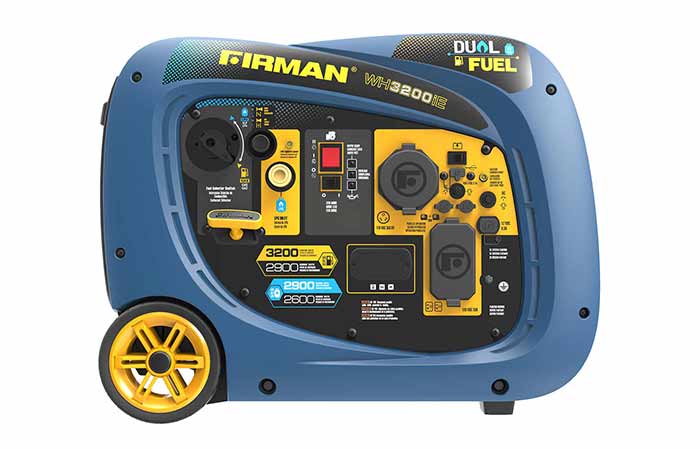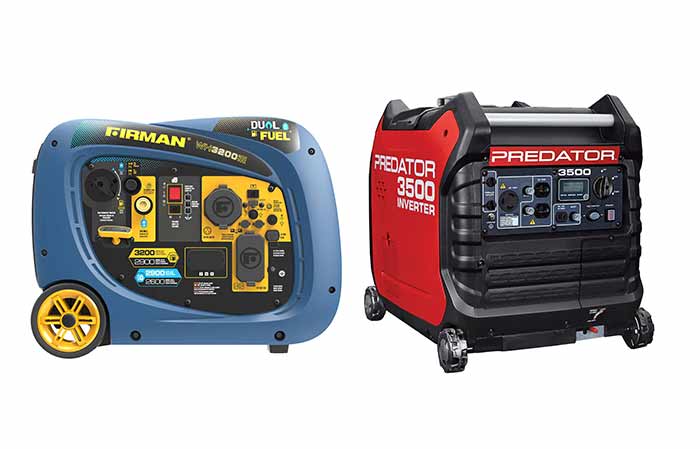Generators come in all shapes and sizes with one of the major distinctions being between inverter and conventional generators. The inclusion of an inverter makes one of the main differences among generators with lots of benefits coming from this little piece of hardware. Like all things, however, inverter generators have a few downsides one should look at when buying one.
A power inverter is a piece of equipment used to convert DC (direct current) into AC (alternating current). As you may have noted, a majority of electrical appliances use AC current. Besides that, AC current is generally safer than DC current since it is smoother and less prone to surges.
In this guide, we define inverter generators, describe how they work then detail their pros and cons. In our expert point of view, inverter generators are by far the better option when compared to other types of generators.
What is an Inverter Generator?
An inverter generator is one which has an inverter fitted on it. This kind of generator will produce power that’s ready to be used by almost all types of electronics. Basically, they’re generators that produce the same power as a wall socket outlet.
On the other hand, a conventional generator doesn’t have the inverter to stabilize the power and make it clean for use by sensitive electronics. Conventional generators can’t run at a specified RPM (revolutions per minute) consistently and will often produce unstable power.

How does an Inverter Generator Work?
Simply put, an inverter generator works like a normal generator in that it produces DC power by running the engine. After that, the inverter converts the power into AC current. The power outlets on the body of the generator are all in AC power and can thus be used even with the most power-sensitive items such as mobile phones and TV sets. Some inverter generators even have USB outlets to directly charge mobile phones and other small and sensitive electronics.
The process of power production starts with the production of AC power which is converted by the alternator to DC power. The inverter then converts it back to AC power before supplying it to the power outlets. AC power has less harmonic distortion and thus the best for electronics.

Pros
Some of the benefits of inverter generators include the following:
1. Stable power
The main advantage inverter generators have over their conventional alternatives is the ability to convert power from DC to AC. This means that the power from an inverter generator is not only ready to be used by most electronics; it’s also safe for the sensitive electronics such TVs and phones.
This also means there are fewer chances of power surges as AC power is smoothed out and won’t damage your electronics.
2. Small size
Compared to conventional generators with the same levels of power output, inverter generators will be smaller and much more compact. They will, however, have more features compared to the conventional ones as described in the rest of this article. There are inverter generators producing thousands of Watts of power yet only the size of a small suitcase. This makes them highly portable.
3. Quiet
Being small and compact and also very efficient at burning fuel has made generators very quiet with incredibly low levels of noise being achieved. Even at 100% power output, inverter generators barely make any noise.
Their noise levels, measured in decibels, will often rate below that of a normal conversation between two people. They often produce between 54 to 58 decibels of sound compared to about 64 decibels for conventional generators. Keep in mind that, with noise, each 10 decibels added result in double the noise released.
4. Safe
The safety of inverter generators emanates from their being relatively small and thus easier to secure during and after use. You can easily store away your inverter generator when the party is over or construct a small shed that will keep it safe away from the house.
The other reason is that they’re increasingly coming with lots of sensors that keep the generator and its users safe. These include a carbon monoxide (CO) safety shutoff device which automatically shuts the generator off when the amounts of carbon monoxide reach dangerous levels around the generator. Other safety features include sensors for the heat, oil and other aspects that keep the generator within the stipulated working parameters.
5. Efficient to run
Conventional generators will run at a steady level no matter the load being applied. On the other hand, inverter generators automatically throttle the engine up and down as per the needed power output. This saves on the costs of running the generator since you’ll only use up as much fuel as your power needs.
6. Modular compatibility
Modular compatibility refers to the ability to connect two or more generators to supply power to a single outlet. It helps save on running and purchase costs while also supplying large amounts of power when needed. While conventional generators can also have modular compatibility, the fact that inverter generators produce ready and stable power makes them the most convenient for this task.
7. Less maintenance needed
A conventional generator will require lots of frequent checks and inspections and even repairs especially when used frequently. Typically, you will be changing the oil after every 200 hours of use on a conventional generator.
The level of maintenance on an inverter generator is very low as you’ll only need a yearly inspection of the batteries. The batteries will need a change if they don’t store any charge. Other parts can also be inspected periodically but it won’t be as urgent as in the case of a conventional generator.
8. Lower emissions
Inverter generators produce very low levels of emissions thanks to the efficient way they run as described in the previous point, and the fact that they’re tuned better than conventional generators in burning fuel efficiently.
These are the reasons inverter generators are gaining in popularity. As more mainstream manufacturers produce them, inverter generators will only become more popular.
Cons
Some of the downsides to owning and using an inverter generator are as follows:
1. Costly
Compared to a conventional generator with the same power output, inverter generators will often be costlier. This is due to the many additions the inverter generator comes with the main one of which is the power inverter.
The extra money you pay for this type of generator, in our opinion, is worth every penny since you’ll be paying for lots of safety and convenience with inverter generators.
2. Less powerful
You can indeed find a large inverter generator such as the standby type. However, most inverter generators are meant to provide small amounts of power with the most common uses being for the RV and small homes.
Inverter generators often top out at about 4000 Watts while conventional ones can go to 10000 Watts or even more. This is majorly because they’re the best for this category of users who require stable and convenient power sources.
As stated earlier on, it doesn’t mean that you can’t find a 10000-Watt inverter generator. It just means that there are fewer of them than conventional ones.
Besides these two, there aren’t many negative points for inverter generators as they’re meant to be efficient and convenient.
